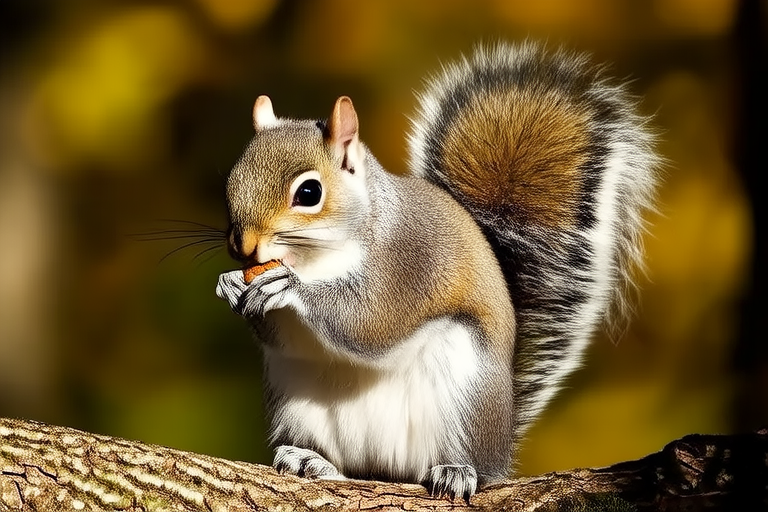Meet the Acrobats of Your Neighborhood: Fun Facts and Photos of Squirrels
Welcome to your neighborhood’s most entertaining performers! Squirrels are not just cute little creatures that scurry around your backyard; they are acrobatic athletes with fascinating behaviors and adaptations. From their impressive jumping abilities to their strategic food storage habits, squirrels have captured our hearts and minds with their antics. This article will introduce you to the world of squirrels, sharing fun facts, photos, and scientific insights to help you appreciate these neighborhood acrobats even more.
The Acrobatic Performers
Have you ever watched a squirrel leap from one branch to another? It’s a breathtaking display of agility and precision. These small mammals can jump up to six feet in a single bound, thanks to their powerful hind legs and strong tail for balance. Their tails act as rudders, helping them steer mid-air and land gracefully on narrow branches or rooftops.
One of the most common squirrels in North America is the eastern gray squirrel. They are known for their playful nature and can often be seen chasing each other through trees or racing across power lines. Their agility is not only for fun; it’s essential for survival. Squirrels must navigate complex environments to avoid predators and find food.

Strategic Food Storers
Squirrels are also masterful at hiding food for later. During autumn, they collect nuts and seeds, burying them in various locations throughout their territory. This behavior, known as caching, ensures they have enough food to survive during winter months when resources are scarce.
Remarkably, squirrels have a nearly photographic memory. They can remember the location of thousands of caches, even after several months have passed. However, they intentionally scatter their caches to reduce the risk of losing all their stored food to competitors or theft.
Did you know that some squirrels will fake bury their food if they feel they are being watched? This deceptive behavior helps protect their real caches from potential thieves like birds or other squirrels.

The Secret Lives of Squirrels
Beyond their acrobatics and caching habits, squirrels lead complex lives filled with social interactions, territorial disputes, and even courtship rituals. Males compete fiercely for the attention of females during mating season, sometimes engaging in physical altercations to establish dominance.
Female squirrels typically give birth to litters of two to four babies in late winter or early spring. The young, called kits or kittens, are born blind and hairless but grow rapidly under their mother’s care. By the time they reach adulthood, they are ready to face the challenges of life in the wild.

Adaptations for Survival
Squirrels have evolved numerous adaptations that allow them to thrive in diverse environments. Their sharp claws enable them to grip bark and climb trees effortlessly. Additionally, their fur coloration varies depending on the region, providing excellent camouflage against predators.
Some species of squirrels have developed unique adaptations to specific habitats. For instance, the flying squirrel has a membrane of skin between its front and back legs, allowing it to glide between trees. While this doesn’t constitute true flight, it provides an efficient way to travel long distances without expending too much energy.

Interactions with Humans
Squirrels have adapted well to living alongside humans, often thriving in urban and suburban areas where they can find abundant food sources. Many people enjoy feeding squirrels in parks or backyards, creating opportunities for close encounters with these charismatic animals.
However, it’s important to remember that while squirrels may seem tame, they are still wild animals. Feeding them human food can lead to health problems and make them dependent on handouts. Providing natural foods like nuts, seeds, and fruits is the best way to support their diet without causing harm.
Conclusion
Squirrels are more than just cute creatures that bring joy to our neighborhoods; they are remarkable survivors with fascinating behaviors and adaptations. From their acrobatic leaps to their strategic food storage, these small mammals have captured our imaginations with their antics. By learning more about squirrels, we can better understand and appreciate the role they play in our ecosystems.
Next time you see a squirrel in your backyard or park, take a moment to observe its movements and consider the incredible journey it takes to survive in the wild. Who knows? You might just catch a glimpse of one of nature’s most talented acrobats in action!
